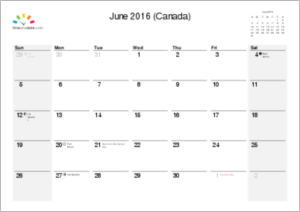I’ve had many first-time writers ask what are ways they can find more time to write or how do you write more books and still have a life?
So, I thought I would put together a page that I hope helps you on your own journey to becoming a more productive writer.
1. First, choose what it is you really want.
This is, I believe, the most important question you can ask yourself.
For the simple reason, that knowing the answer, will be your guide to how you fill the hours of each day. When you have your why, you’ll also have your motivation to write.
Each of us have people we love, family to spend time with, bills to pay and the list goes on and on. And we’ve each got 24 hours to do it in, which means…
Whatever you choose to focus on, is what you’ll get as a result.
So, if you really want to write that book, you will carve the time out of somewhere in your day. And maybe all you have is 30 minutes…. that’s okay. At least you’re moving forward and you have more words in your book than you did yesterday.
If you want to finish and publish your book, you will have to sacrifice time from somewhere(most likely) in order to get it done. Also, if you want to be a full-time author and make a living with your writing, you will have to choose to make the time. Sounds simple… but it’s not easy.
2. Second, create a schedule for when you’ll write.
Since each of us only get 24 hours in a day, we have to adjust real life – work, family, friends, down time – with writing. Since I still teach piano and voice lessons – which happens after school for a few hours on weekdays – I get up early to write fiction. I have the afternoons for podcast interviews, marketing stuff and doing other things to build my online business. I try to keep most evenings(after students are gone) for family time. Somedays I’m better at that than other days. I try to work hard on doing that which will help me get to my goal.
to build my online business. I try to keep most evenings(after students are gone) for family time. Somedays I’m better at that than other days. I try to work hard on doing that which will help me get to my goal.
So scheduling is very important. That’s why I use a calendar that I print off and pin up beside my desk. I put my word count for each day as well as interviews, when I need to write the next blogpost as well as when I’m creating videos(like for the online course of the storyteller’s roadmap), what I need to do each day in Keynote and Screenflow. I print them out for 3 months in advance – so I know what’s coming up next. I find it super helpful.
And of course, I write in dentist/doctor appts for the family or other things we have scheduled like hiking trips. Sometimes I mess up and get the dates wrong, but usually, this is something I wouldn’t be without. When I’m going somewhere, and I need to book something, I use the To Do List App on the iPhone, which works great 🙂
3. Remember to give yourself rewards.
Rewarding myself is something I’m still learning. That said, there are many rewards that my creative muse – or inner child(as Julia Cameron refers to in The Artist’s Way), really enjoys.
For example, recently I went to Calgary’s Glenbow Museum with my youngest daughter, and we explored the archives on the top floor. I was so excited to hold a 1930’s newspaper in my hands and see pictures of actual people who were pioneers in ranching and homesteading in Alberta. I loved it.
Also, I love to spend an hour or so exploring craft places, like the Dollar Store 😉 I look around at colouring books and often buy one and grab some stickers. I love colouring as way to relax, but also as a way to let my creative child have fun. Somehow, by the time I’ve finished colouring a page, I’m refreshed again. Try it… you might be pleasantly surprised. The kids got me this coloring book last Christmas – The Lost Ocean by Johanna Basford – and I love it! If I’m ever stuck as I’m writing my story, coloring really helps.
4. Set your own deadlines.
When I wrote my first novel, sad to say I didn’t really have any sort of deadline. I just kindof had a ‘well-it-would-be-nice-if’ sort of deadline. Which as you know, doesn’t really work too well! Which explains why it took me so long(read years!) to write my 1st novel ;(
Since that first book, I’ve sped up my process a little bit. Although in between Book 1 and Book 2, I did a few extra things too – I got my life coaching certification; I wrote the nonfiction book and course to help new writers with: Write and Publish Your First Book – so that pushed back the deadline for Book 2 in the series.
It’s just a matter of tweaking what you’re doing, so that you get into a productive and workable(for you), creative rhythm.
Next, in my list of ‘to-do’s’, I want to start putting books on pre-order. I haven’t really tried that function, but I think that would help with: 1)giving writers a hard deadline and 2) more readers finding your books. You can do this on Amazon, iBooks, Kobo and if you use Draft2Digital as an aggregator, it allows readers to pre-order your books on Nook as well.
5. More hours spent writing.
Each of us as writers, know what we need to do. But it’s not easy.

When we choose to spend more hours sitting in our chair writing, it will result in more words on the page.
There’s many indie authors that inspire me with their schedule and how consistently they self-publish. Romance author Ruth Ann Nordin, writes 1000 words each day on the main book she’s focussed on and then has 2 other books where she’ll write 500 words a day in each. She just writes wherever she’s at. If she’s driving her kids to an activity, she’ll write while she’s waiting for them to finish, or she goes to a coffee shop. If she has a writing day where she feels stuck, she just tells herself, I’m just going to write 250 words, I can do that. You can read more about how Ruth writes and self-publishes 5 – 6 books a year here.
Inspired by Ruth, I’ve started writing wherever I’m at – if I’m waiting for the kids from dance lessons or if I’m somewhere else where I know I’ll have a long wait.
Once you schedule your writing time(see point #1), then you have to actually carve out time to type the words onto the page.
You can do this. You can be a productive author 🙂
© Copyright 2018 Lorna Faith.
Create A Story You Love. All rights reserved.

